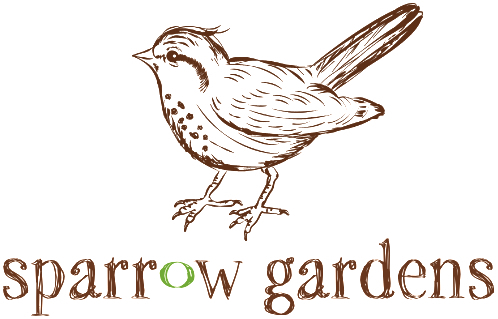voles = voracious
Taking a walk around the garden in early spring we may notice small “racetrack” like paths running through the lawn and garden beds. These are created by voles, one of the most destructive and difficult pests to eradicate from our yards. Here on Cape Cod meadow voles are the second most common small mammal, behind only the white-footed mouse.
Moles vs. Voles
So what is the difference between moles and voles? Moles dig tunnels right below the surface of the soil, creating raised areas with larger piles of soil (mole hills) at certain points along the path (when they dig deeper they have to push more soil out of the way). They are also insectivores who eat grubs, earthworms and other insects beneath the soil. Voles are herbivores and thus they eat plant material - especially the succulent roots of plants, flower bulbs, vegetables, grass roots, and small trees which you graciously provide in your lawn and garden beds. They prefer to live in moist areas with plenty of ground cover, which is why irrigated garden beds are one of their favorite places to inhabit. The moist soil is easier to move through and the plants provide cover from predators and plenty to eat.
Above: Vole tracks in lawn
Characteristics
Measuring four to seven inches in length, voles are small grayish-brown rodents with longer fur and shorter tails (less than 2”) than their mouse relatives. Voles are voracious eaters, consuming their weight in food every day. As they do all their “dirty work” underground, eating away at the roots of plants, they will often be undetected until a plant suddenly wilts and starts to fail. Upon examination, the plant can many times be pulled right out of the ground, due to its lack of any remaining root system.
Voles are active day and night, year-round, and can reproduce over 12 times per year (that’s up to 100 offspring per female!). If left uncontrolled voles can quickly take over a yard, their range being up to 1.5 acres of area.
Benefits
As with all wildlife, there needs to be a balance and voles do play an important role in our local ecosystem. In grassy habitats they eat small tree seedlings which helps to maintain the open field and they are also important prey for hawks, owls, coyotes and foxes. Natural predators are not usually able to control a population spike in our gardens, however, because they simply don’t come that close to our homes on a regular basis. An outdoor cat is an ideal predator, and if you have one you most likely will not have a problem with voles.
Management
One way to prevent voles is to limit their preferred habitat - dense vegetative cover, tall grass, weeds and heavy mulch are all attractive havens for voles. A hardware cloth barrier buried six inches below ground and 12 inches high will prevent voles from entering a garden bed and protect young tree seedlings. When the population is not too high trapping with mouse traps baited with peanut butter or apple slices can also be effective, as long as there are enough traps and the traps are checked often and reset until no more activity is noticed. (Gloves should be worn when handling voles as they are carriers of several pathogens and parasites.) In areas of high pressure a professional pest control company may need to be employed to set baited boxes in order to reduce the population. These locked boxes contain a poisoned bait which the voles eat and then succumb to outside of the box, leaving the box open for other voles to enter. Make sure the bait being used is safe for larger prey animals, in case the deceased vole is taken by one to eat.
Within a specific area such as your garden vole populations will not expand indefinitely, nature will limit the maximum number depending on food availability, predators, etc., however the damage which can occur with a “healthy” population is often much more than a homeowner wishes to endure. Early action and preventative measures are the key to keeping these root robbers under control and out of your gardens.




